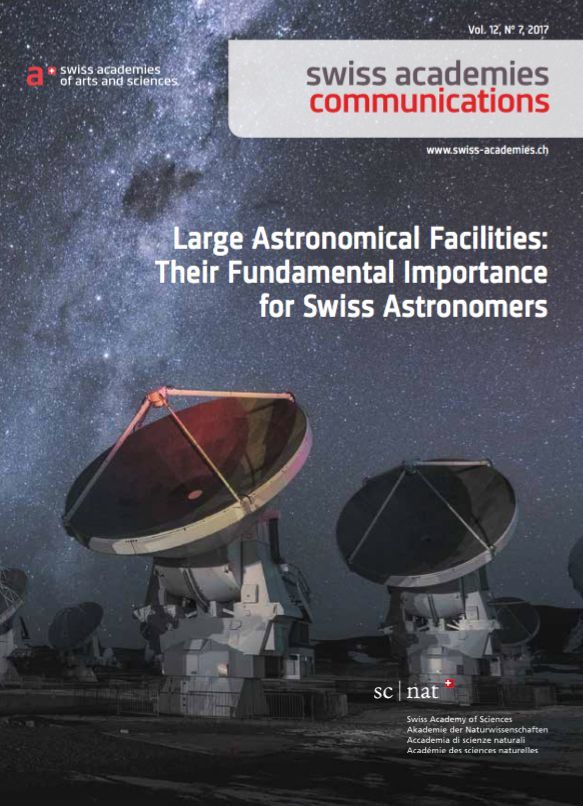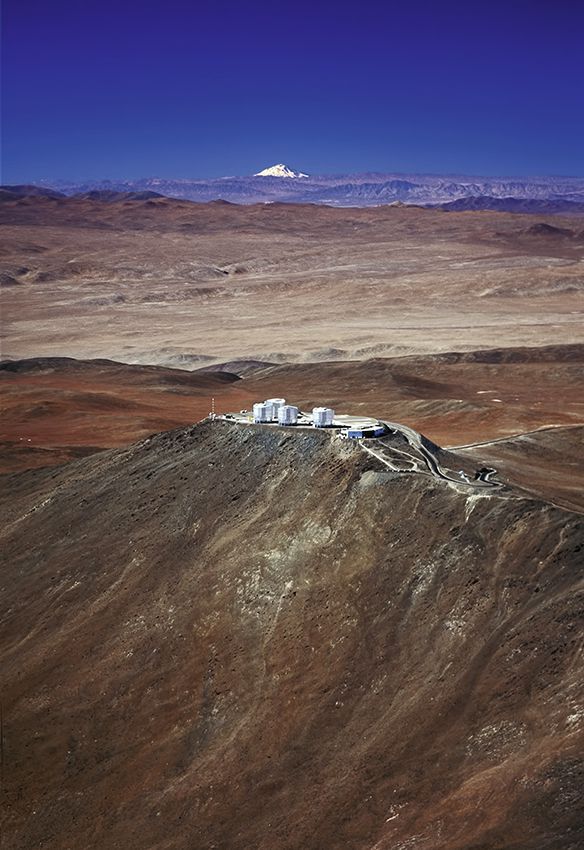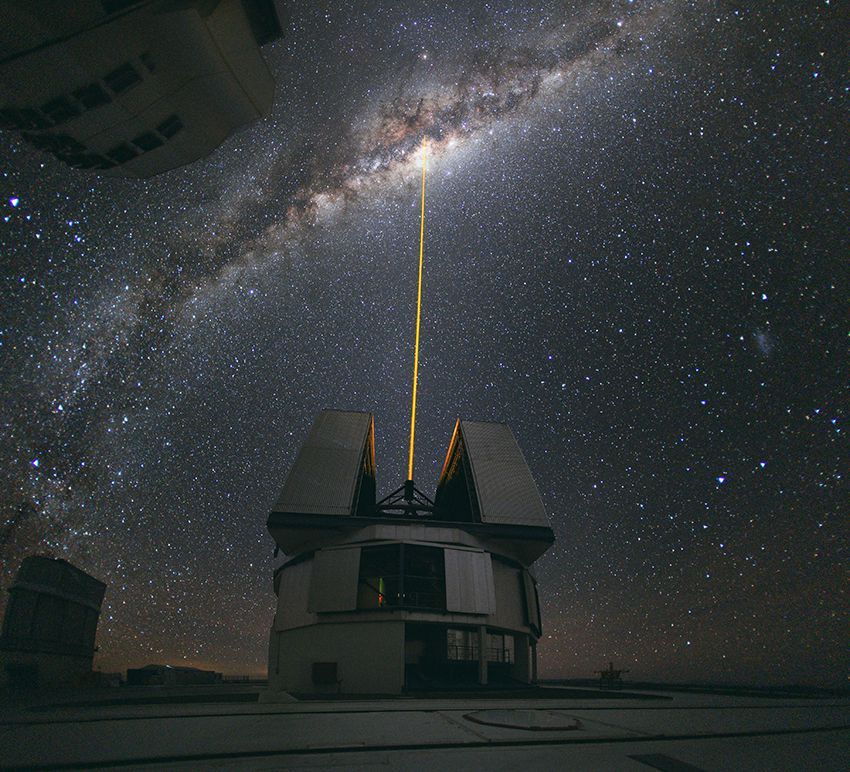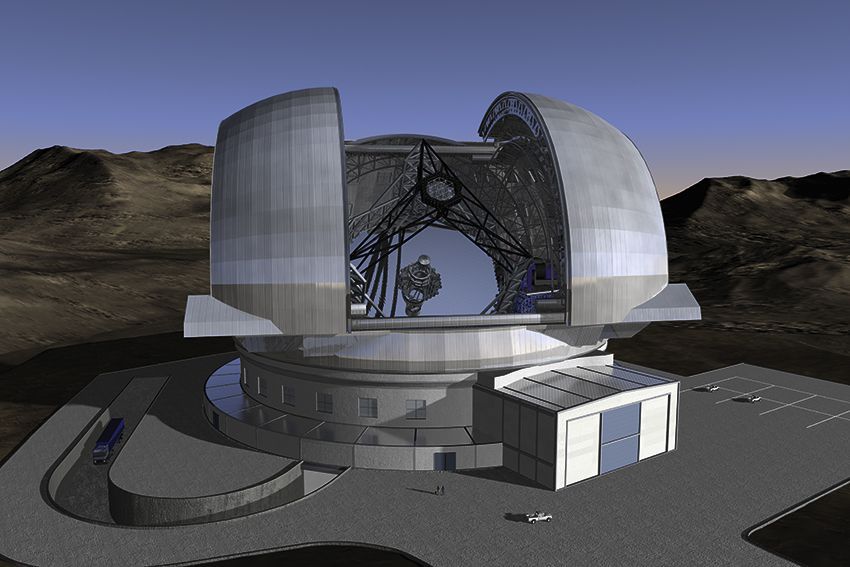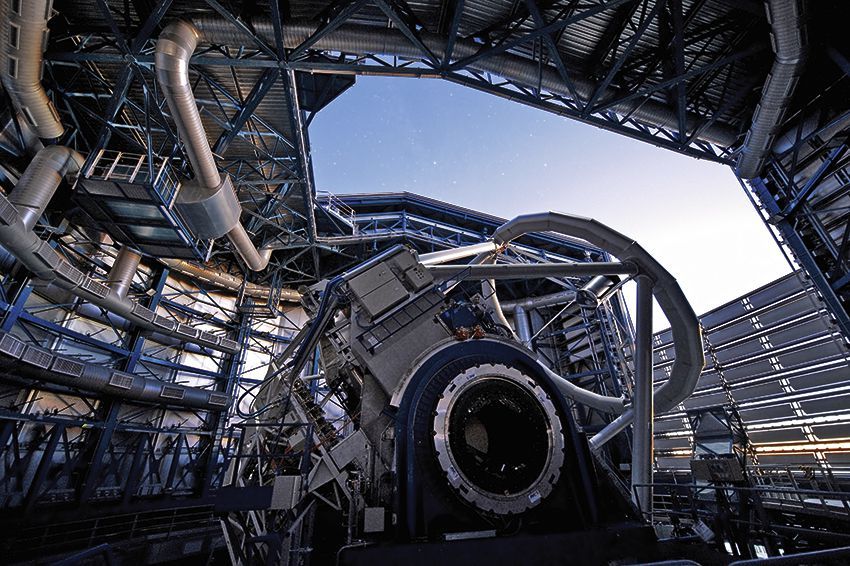Temi associati
Tag der offenen Tür Observatorium Zimmerwald
Das Astronomische Institut der Universität Bern hat am 29. Mai im Observatorium in Zimmerwald zwei neue Kuppelbauten mit vollautomatisierten Teleskopen zur Himmelsüberwachung eingeweiht. Aus diesem Anlass findet am Samstag, 2. Juni ein Tag der Offenen Tür statt.
Immagine: zvg Dominik Bodenmann, AIUB Universität BernDes Suisses dans les étoiles
Que sont l'astrophysique et la cosmologie sans, entre autres, les grands téléscopes distribués aux quatre coins du monde et les collaborations internationales? La publication de l'Académie suisse des sciences naturelles présente l'importance de ces grandes installations astronomiques pour la recherche en Suisse.


